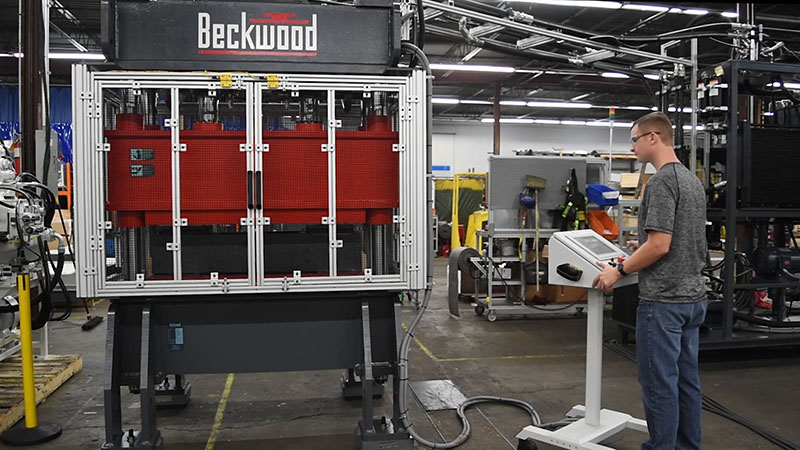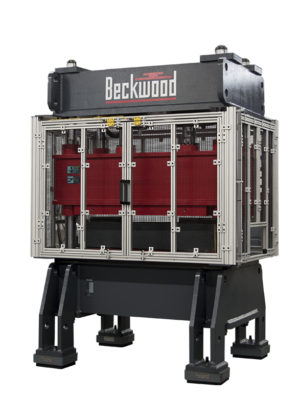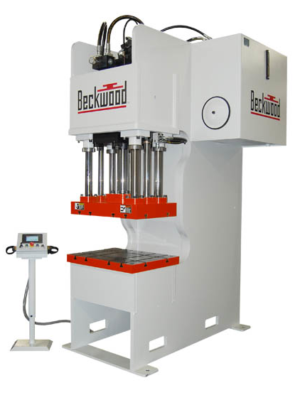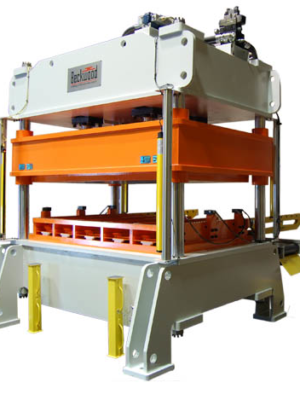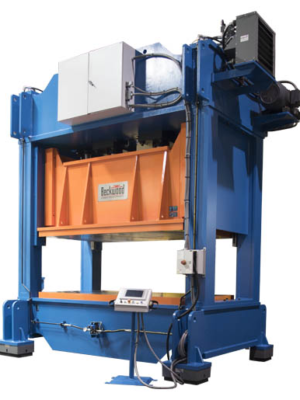A punching press is critical machinery used in the production of aircraft, automobiles, consumer goods, construction equipment, and nearly every product we use because the holes created are critical to the product’s form and function. This can include punching holes into appliance skins or automotive body panels, creating slots for a secondary assembly application or component ventilation, or even creating decorative elements as part of the finishing process. No matter the reason, punching presses are instrumental in the creation of many finished products.
What’s the Best Type of Punching Press?
Unlike mechanical presses, the ram on a hydraulic punch press or a servo-electric punch press press doesn’t have to return to the home position at the end of each stroke. This means cycle times can be greatly reduced using a feature called “short stroking” in which the ram only retracts enough for the tooling to accept a new workpiece. Short stroking is only available on hydraulic and servo electric punch presses since they do not require a mechanical flywheel system to control the motion of the ram.
Beckwood’s hydraulic and servo-electric punching presses are designed to increase productivity, improve process repeatability, and enhance the overall flexibility of your operation. We offer standard hydraulic and servo-electric punch presses for light-duty punching and blanking as well as custom designs with higher tonnages engineered to your exact specifications. Punch presses can also be used for blanking applications and can include productivity features like scrap chutes, conveyors, and coil feed systems.
Challenges of Punching and Blanking
Breakthrough shock is a byproduct of any punching or blanking operation, but because hydraulic punch presses achieve full tonnage at any point in the stroke, they can be programmed to increase tonnage during the pressing operation and quickly reduce the tonnage once the workpiece is pierced. To maintain extreme parallelism despite breakthrough shock, many Beckwood customers also include our proprietary Active Leveling Control (ALC) technology. ALC relies on a high-speed motion controller to sense the acceleration of the ram during breakthrough, adjust the axis control valves, and restrain the ram to minimize breakthrough shock. Additionally, hydraulic shock dampers can absorb the shock energy without de-rating the press’ capacity or requiring additional tonnage. Using both ALC and shock dampers will extend your press’ component life, prevent undue stress on your tooling, and improve your overall uptime.
Punching vs. Blanking: What’s the Difference?
Presses used for punching and blanking essentially perform the exact same function: making holes in a sheet of metal, plastic, carbon fiber, or composites. The primary difference between the two applications is the finished workpiece. If the desired end-product is the sheet with the hole in it, it is punching. If the end-product is the smaller piece extracted from the sheet, it is blanking. In either case, speed, accuracy, and repeatability are the main requirements manufacturers seek in punching and blanking presses.
ARTICLE: Why hydraulic press technology makes sense for precision punching in roll forming lines
Consult a Beckwood Engineer about Your Punching Press Needs



